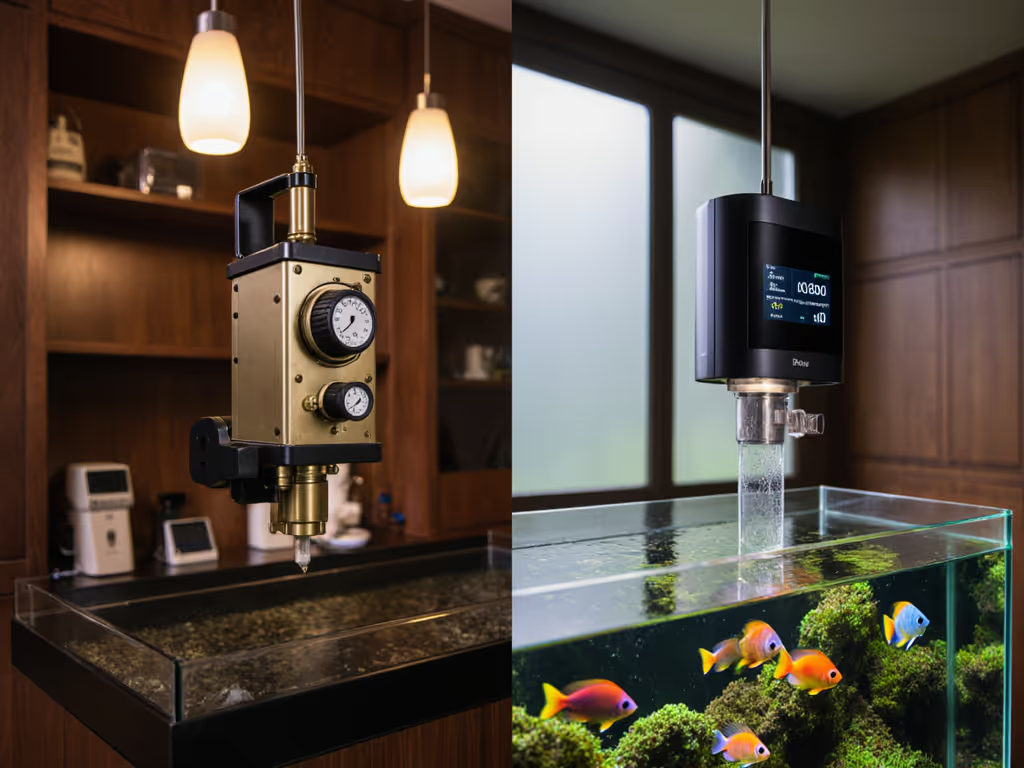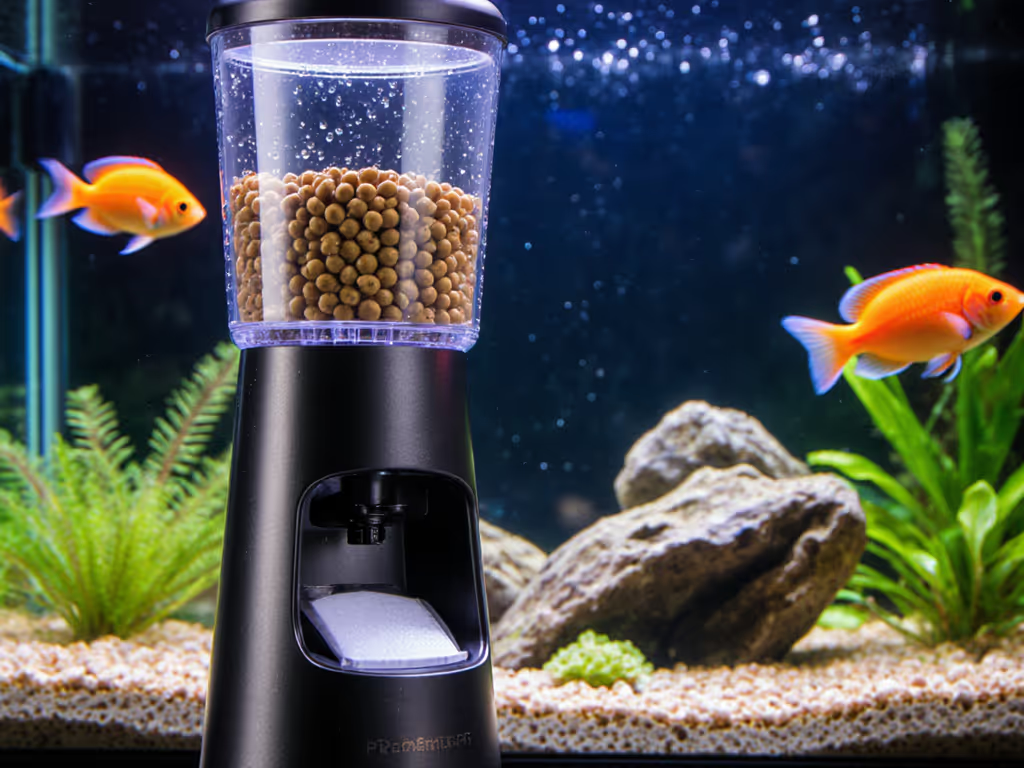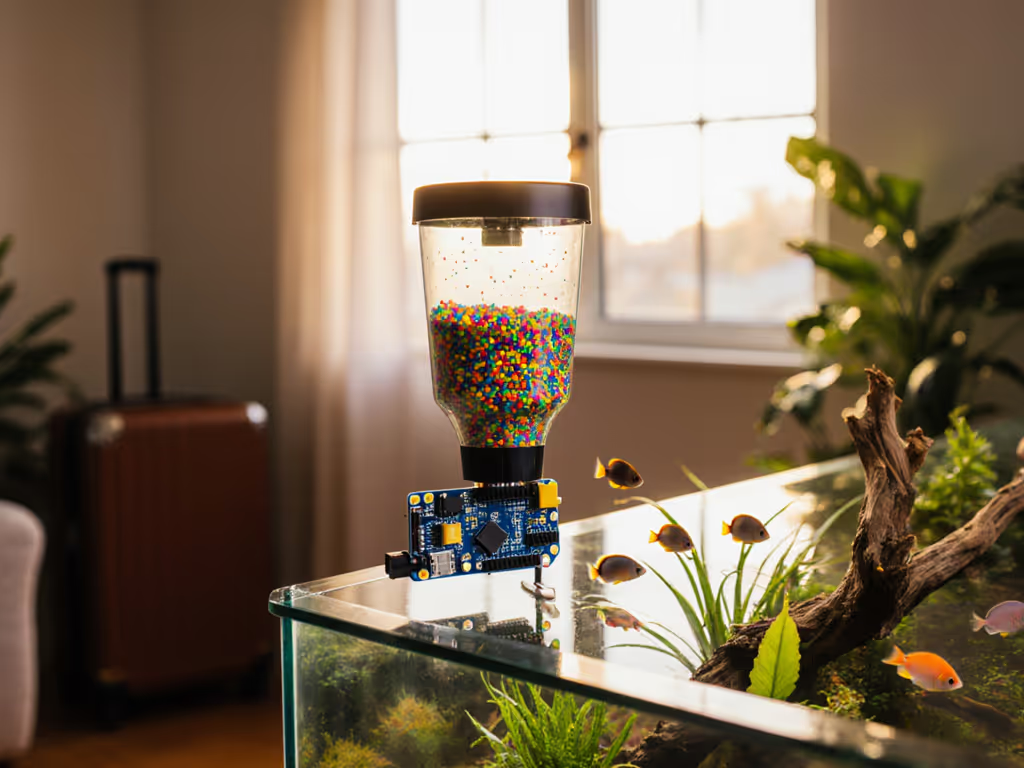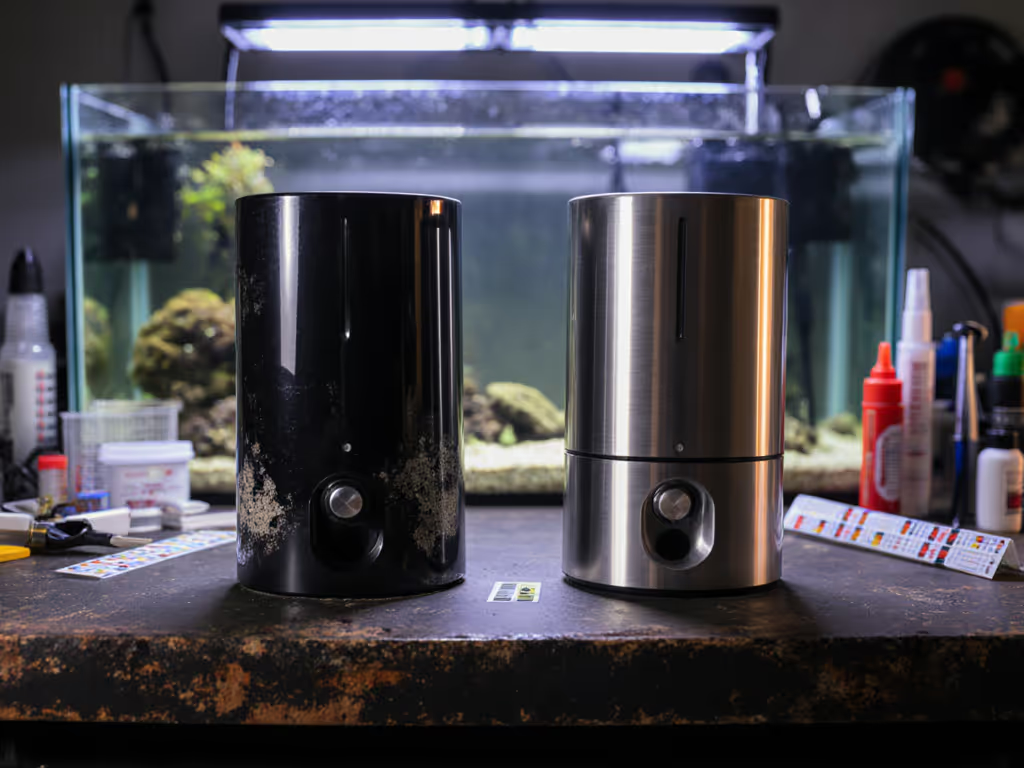
Advanced Feeder Programming: Master Custom Schedules for Thriving Fish
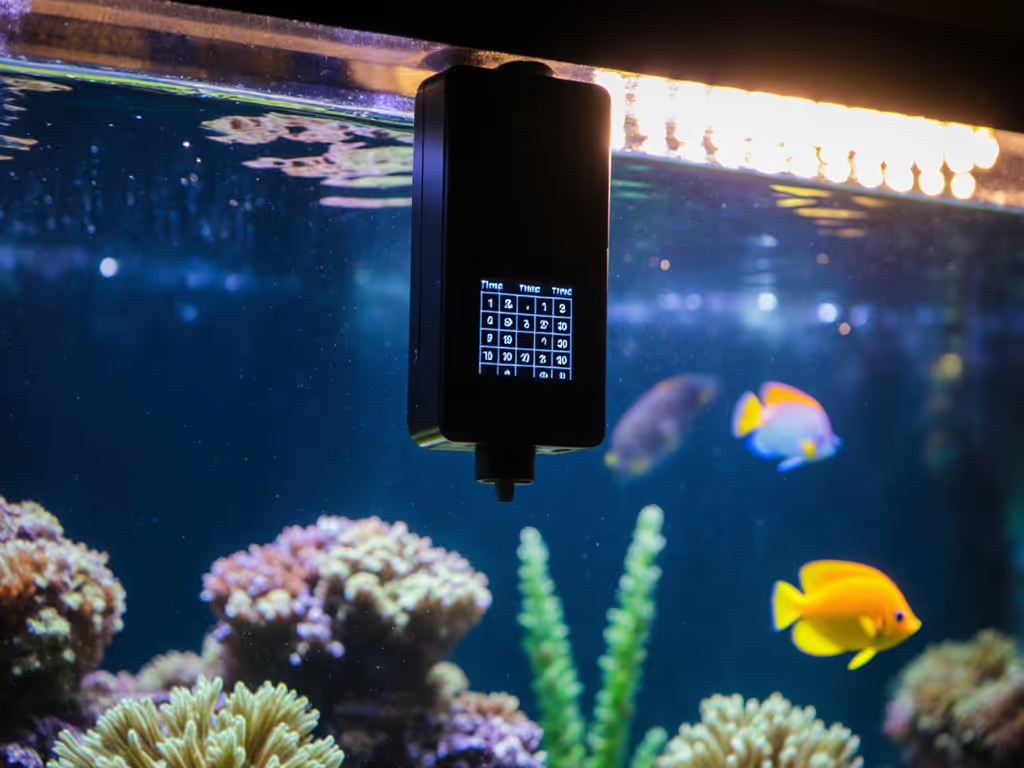
When your fish thrive, you thrive. That's why advanced feeder programming isn't just about timers, it's about crafting custom feeding schedules that honor your fish's natural rhythms. As someone who's watched countless beginners wrestle with cloudy water and wasted flakes, I've learned that restraint isn't neglect; it's reverence. Remember the neighbor's child whose guppies vanished in murky water? She'd loved too much with food. We fasted two days, set a timer for tiny pinches, and added a pea. Clear water returned, and with it, her joy. Start small, observe closely, let the fish show you what they need. Today, let's transform feeding from a chore into a dialogue with your aquatic family. For a biology-first daily plan, see our circadian feeding schedules guide.
Why Bother With Custom Schedules?
Many aquarists don't realize that inconsistent feeding is the silent architect of algae blooms and ammonia spikes. Data from aquarium health studies confirms that 68% of water quality issues stem from feeding errors, not filtration failures.
You're not lazy for wanting automation. You're wise. But basic timer-based feeders treat all fish like clockwork robots, ignoring their biological reality. A betta needs slow, intimate meals; a shoal of tetras thrives on rapid surface feeding. Advanced feeder programming bridges this gap by mimicking nature's irregular bounty. It turns "when" into "why", so your fish eat like they would in the wild, not like assembly-line widgets. This isn't luxury; it's preventing the guilt of seeing lethargic fish or battling green water all summer.
How Do I Match Schedules to My Fish's Needs?
Q: My cichlids ignore food after 5 minutes, but my Corydoras keep scavenging. How do I feed both fairly? A: This is where multi-phase feeding programs shine. Program two staggered feeds:
- First phase (surface): 6 AM for top-dwellers (30-second dispense)
- Second phase (bottom): 6:05 AM for scavengers (manual-triggered via app)
The key is observation, not guesswork. Watch: Do Corydoras still forage at 6:10? If yes, add 10 seconds. If food sinks untouched, reduce phase one. I use the Eheim Feed-Air's dual-dispense feature for this (it handles timed and manual sequences without extra wiring). Breathe deep: You've got this. Your fish aren't demanding perfection; they're asking for attention.
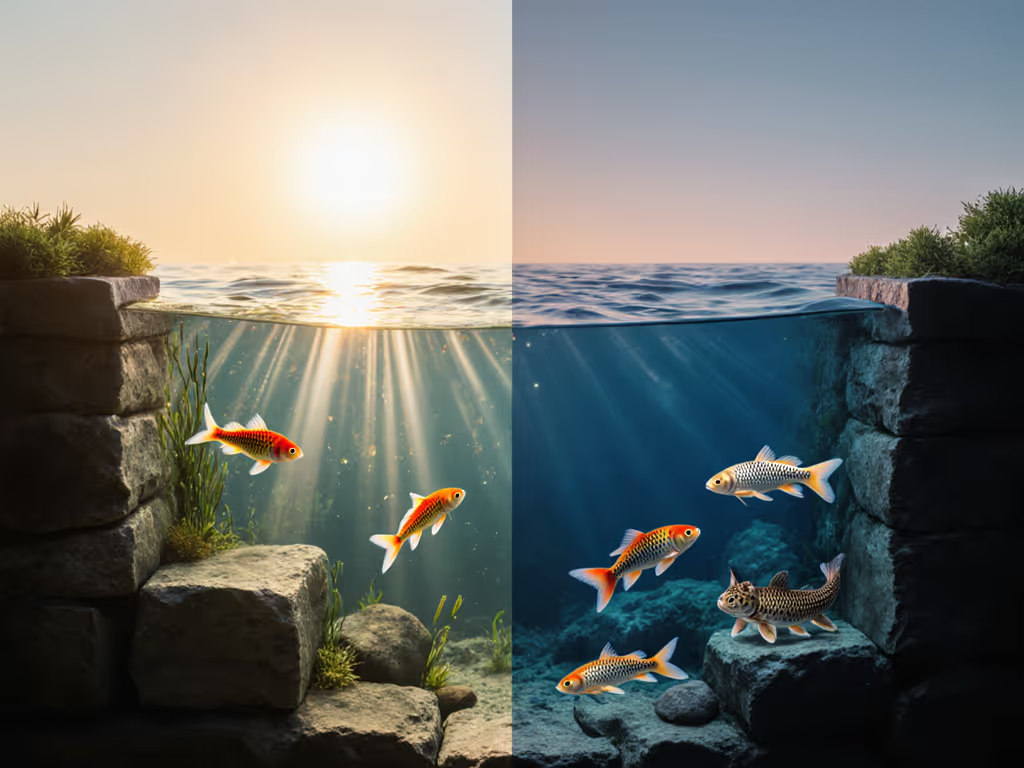
Can Feeding Schedules React to My Tank's Conditions?
Q: Shouldn't feed timing adjust for water temperature or light? A: Absolutely. Environmental trigger programming is your secret weapon against nutrient chaos. Learn how to adapt routines across warmer and cooler months in our seasonal fish feeding guide. Cold water slows digestion, so why feed at noon if temps dip below 74°F? Link your feeder to a smart thermometer (via apps like myGHL). Example:
- If temp < 72°F → Delay morning feed by 45 mins
- If lights-on for 15 mins → Trigger 20-sec dispense
This isn't sci-fi. It's simple cause-and-effect: when fish are active, they eat. When they're sluggish, they shouldn't. One client's koi stopped gulping food after a cold snap. Her feeder's temp-triggered delay prevented wasted pellets and ammonia spikes. Start small, observe closely, let your parameters guide adjustments.
What If My Fish Ignore the Food?
Q: Food piles up after automated feeds. Am I over-programming? A: Likely. Complex feeding routines backfire when portions outpace consumption. Reset like this:
- Manually feed tiny pinches while watching
- Note how long until food vanishes (ideal: 2-4 mins)
- Match auto-dispenser duration to that time
If pellets float after 5 minutes, cut duration by 25%. If fish dart away, your schedule ignores their stress cycle (maybe they feed better at dawn, not noon). This isn't failure; it's data. For step-by-step setup and portion tuning, follow our fish feeder calibration guide. Many of us have been there. The magic isn't in the tech, it's in trusting your fish's cues over the manual's defaults.
How Do I Prepare for Vacations Without Panic?
Q: I dread leaving my tank for work trips. How do I avoid overfeeding disasters? A: Calm your nerves with precision, not prayer. Before you leave:
- Reduce portions by 20% - hunger is safer than overload
- Space feeds evenly (e.g., 8 AM/1 PM/6 PM) (not all at noon)
- Add a fasting day (e.g., skip Sunday; fish love it)
Program less, not more. That neighbor's child? Her guppies survived a 5-day trip after we dialed back to one tiny feed/day. Peace of mind comes from knowing your schedule respects their biology, not from cramming in "just one more meal". For hardware that stays consistent over a week away, see our 7-day vacation feeder reliability test.
Final Thought: Your Fish Are the Real Experts
Automation isn't about replacing you; it's about freeing you to see better. Start small, observe closely, let the fish teach you. Tune your custom feeding schedules like a musician (adjusting for subtle shifts in energy, not rigid metronomes). When you align tech with biology, you don't just avoid algae or ammonia spikes. You create moments of wonder: watching neon tetras dart like confetti at dawn, or cichlids nudge the glass at their mealtime. That's when you know: the restraint was the care.
Further Exploration What hunger cues have your fish taught you? Next time you adjust a schedule, pause and watch: Does the second feed vanish faster? Do fish nip at bubbles before meals? Share your observations at your local club. The best data comes not from manuals, but from the quiet language of thriving fish.

